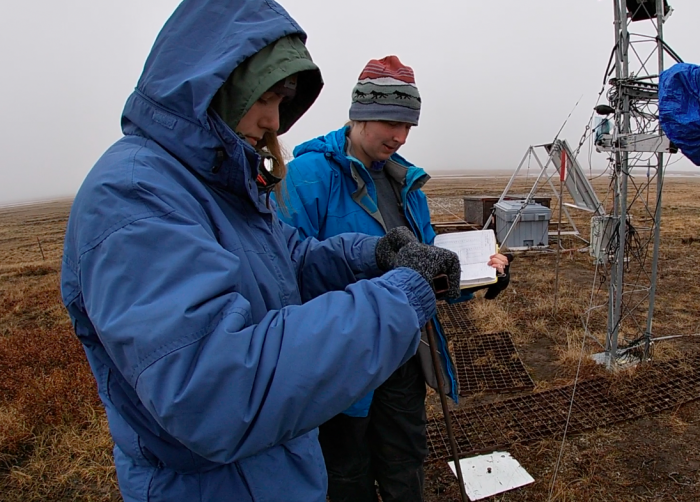PermafrostPermanently frozen ground. is permanently frozen soil and you can find it underneath the entire North Slope of Alaska. It can be about 90-600 meters thick here, but near Toolik lake it is 200 meters thick. PermafrostPermanently frozen ground. thaws every summer and affects how deep roots can grow and therefore what kinds of plants can grow. That's why we don't see plants that need deep root systems. (Read more about that in our post about trees.)
People who live in this area are always thinking about permafrost when they build a house, road or airport runway. If a large amount thaws it could cause soil collapses, which will destroy any structures that have been built.
Have you noticed how swampy this area can be? That is because the water in the upper layer of soil that thaws every year, the active layer has no where to go. The permafrost below acts like a barrier. This is why we need good shoes when going out into the field. It it a bit soggy.



Comments